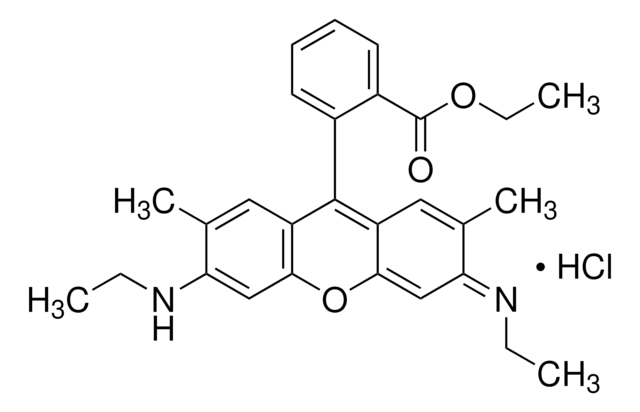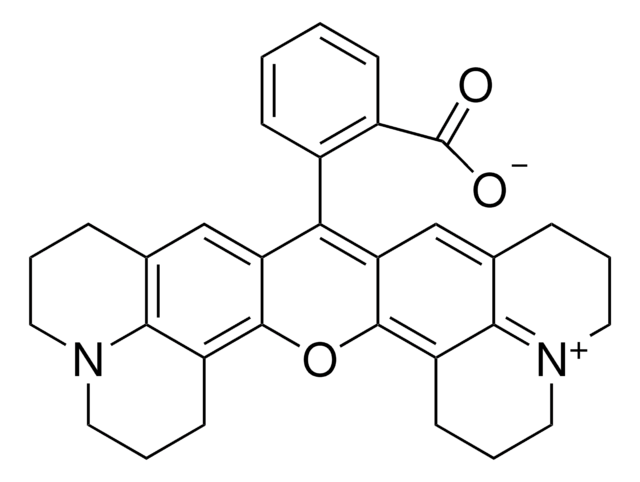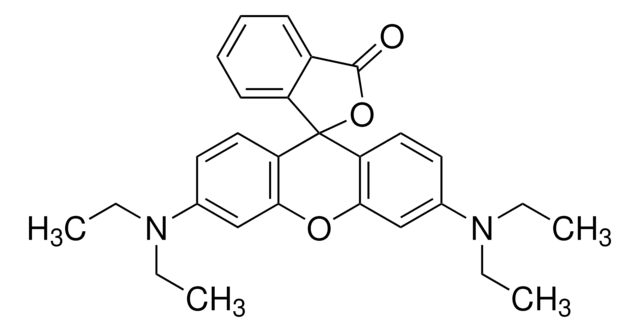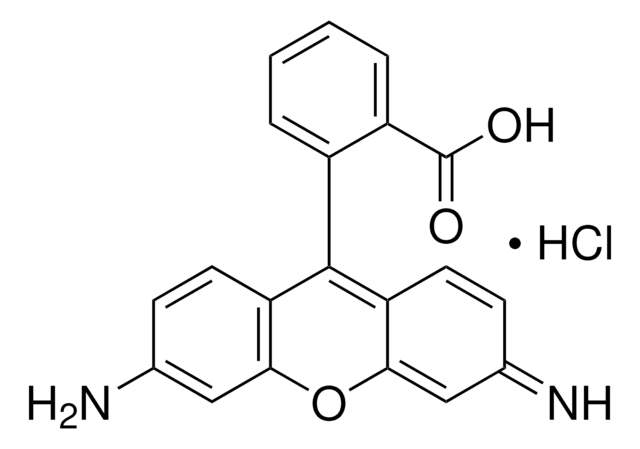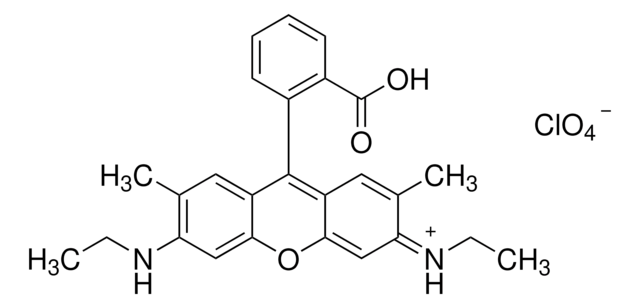252433
Rhodamine 6G
Dye content 99 %
Synonyme(s) :
Basic Red 1
About This Item
Produits recommandés
Forme
solid
Niveau de qualité
Composition
Dye content, 99%
Technique(s)
titration: suitable
λmax
524 nm
Chaîne SMILES
Cl.CCNc1cc2OC3=CC(=N/CC)\C(C)=CC3=C(c2cc1C)c4ccccc4C(=O)OCC
InChI
1S/C28H30N2O3.ClH/c1-6-29-23-15-25-21(13-17(23)4)27(19-11-9-10-12-20(19)28(31)32-8-3)22-14-18(5)24(30-7-2)16-26(22)33-25;/h9-16,29H,6-8H2,1-5H3;1H/b30-24+;
Clé InChI
VYXSBFYARXAAKO-WTKGSRSZSA-N
Vous recherchez des produits similaires ? Visite Guide de comparaison des produits
Catégories apparentées
Description générale
Application
Actions biochimiques/physiologiques
Caractéristiques et avantages
Mention d'avertissement
Danger
Mentions de danger
Conseils de prudence
Classification des risques
Acute Tox. 3 Oral - Aquatic Acute 1 - Aquatic Chronic 1 - Eye Dam. 1 - Skin Sens. 1
Code de la classe de stockage
6.1C - Combustible acute toxic Cat.3 / toxic compounds or compounds which causing chronic effects
Classe de danger pour l'eau (WGK)
WGK 3
Équipement de protection individuelle
dust mask type N95 (US), Eyeshields, Faceshields, Gloves
Faites votre choix parmi les versions les plus récentes :
Déjà en possession de ce produit ?
Retrouvez la documentation relative aux produits que vous avez récemment achetés dans la Bibliothèque de documents.
Les clients ont également consulté
Articles
Mesoporous materials are formed by a self-assembly process from combined solutions of sol-gel precursors (e.g., metal alkoxides) and structure-directing amphiphiles, usually block-copolymers or surfactants.
Developed in the last several years, fluorescence quenching microscopy (FQM) has enabled rapid, inexpensive, and high-fidelity visualization of two-dimensional (2D) materials such as graphene-based sheets and MoS2.
Graphene has emerged as the new wonder material. Being only one atom thick and composed of carbon atoms arranged in a hexagonal honeycomb lattice structure, the interest in this material has exploded exponentially since 2004 when it was first isolated and identified using a very simple method.
Global Trade Item Number
| Référence | GTIN |
|---|---|
| 252433-250MG | 4061825961859 |
| 252433-1G | 4061825961842 |
Notre équipe de scientifiques dispose d'une expérience dans tous les secteurs de la recherche, notamment en sciences de la vie, science des matériaux, synthèse chimique, chromatographie, analyse et dans de nombreux autres domaines..
Contacter notre Service technique